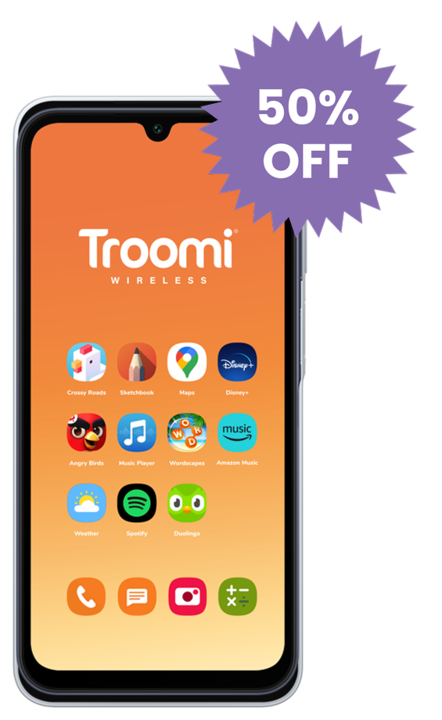I remember YouTube when it was first created back in 2005. It was small and a little strange then! Who could have known it would eventually become the second most-visited website in the world?
Even now, I’m still an avid YouTube watcher. I’m subscribed to a few YouTube channels, I’ve saved dozens of tutorial videos and nature documentaries, and I play jazz music videos while I work. Needless to say, I’m a big fan of YouTube!
A few years ago, YouTube created a YouTube for kids known as YouTube Kids. These efforts were made to provide children with a version of YouTube that didn’t contain inappropriate content.
While that sounds like an awesome solution, the question is: is YouTube Kids safe, or does it just claim to be? Let’s take a tour of the platform and find out!
What Is YouTube Kids?
YouTube Kids—which can be accessed through an Internet browser or downloaded onto mobile devices—is the kid-friendly alternative to YouTube, the video platform powerhouse.
Developed for children under the age of 13, this “YouTube for kids” allows little ones to watch YouTube videos without running into inappropriate content.
Navigating YouTube Kids
Let’s explore some of the features of YouTube Kids before we dive into whether or not it’s safe.
Profile Categories
Before your child can use YouTube Kids, you must set up an account. This is quick and easy if you already have a Google or YouTube account. If you don’t, you’ll need to create one of those first. (Don’t worry, it doesn’t take long!)
After you’re all signed up and squared away, you can create profiles for each of your children. If your children are close in age and share the same content preferences, one profile for them all will do!
Separate profiles are ideal for children with a few years between them. Each YouTube Kids profile must be associated with an age category:
- Preschool (3–4)
- Younger (5–8)
- Older (9–12)
These profile categories ensure that your children only have access to content that’s tailored to their ages and interests. For example, preschoolers wouldn’t understand Minecraft or Roblox videos and older kids wouldn’t want to watch Peppa Pig or Bluey.
Video Categories
Like profiles, videos are also separated into categories:
- Shows
- Music
- Learning
- Explore
- Gaming
For “Preschool” and “Younger” profiles, the “Gaming” category is not accessible. For “Older” profiles, the “Learning” category is replaced by the “Gaming” category.
Content and Privacy Settings
For each profile you create, you can enable custom content and privacy settings:
- Turn off the search feature to limit the videos your child can view.
- Clear search and watch history.
- Hide repeated and recommended videos.
- Stop recommending videos based on search or watch history.
- Set time limits. Once the limit is reached, YouTube Kids will lock!
In addition to the settings you can control, YouTube Kids comes with protections in place that cannot be changed:
- The autoplay feature is disabled. On YouTube, a related video will play after you finish a video. On YouTube Kids, that won’t happen.
- Commenting is disabled on all videos. When a video is classified as a YouTube Kids video, comments cannot be posted below the video. This keeps your kids safe from cyberbullies, predators, and other dangers. This also prevents your child from accidentally sharing personal information online.
- Participation is limited. No one with a YouTube Kids profile can create their own YouTube channel, upload videos, or make purchases.
- Advertisements are geared towards children. Unlike YouTube, the advertisements on YouTube Kids aren’t a wild card. You can rest easy knowing they’re appropriate for young eyes to see. That said, with a YouTube Premium subscription, you can eliminate paid advertisements altogether!
Content Standards for YouTube Kids
Rules for Content Creators
No matter where content creators—those who make and share YouTube videos, usually with financial return—or their viewers reside, YouTube requires that certain standards be met when videos are classified as “made for kids.”
Videos that are safe for children to watch must be indicated as such by content creators. Content creators who fail to appropriately classify their videos can face serious consequences, both financially and legally.
When a video is classified as “made for kids,” that means:
- Children are the primary audience.
- Children are not the primary audience, but children could easily find and understand the content. (This is called “mixed audience” content under COPPA.)
Considerations that content creators must make when classifying their videos include:
- Whether or not the subject matter of videos is appropriate for kids.
- Whether or not children are the intended audience.
- Whether or not videos feature child actors or models.
- Whether or not videos feature celebrities, characters, cartoons, or toys that appeal to children.
- Whether or not the language in videos is intended to be understood by children.
- Whether or not the videos feature activities that appeal to children, like play-acting, simple songs or games, or early education.
- Whether or not the videos feature songs, stories, or poems for children.
- Whether or not advertisements that appear on these videos are typically targeted to children.
If a content creator’s videos involve any of the above factors, they must exercise caution if their videos aren’t actually for children. Content creators should study their YouTube channel’s analytics, COPPA, and Federal Trade Commission guidelines, then list their videos accordingly.
Safety Loopholes
In our increasingly tech-powered world, artificial intelligence (AI) has replaced many roles and responsibilities previously taken on by humans. This has been helpful in some capacities, but dangerous in others.
Moderating content on social media platforms is one of the many tasks predominantly assigned to AI. Though AI is often hailed as being the “better” alternative to human efforts, AI flaws aren’t much of an improvement from human error.
Humans have the creativity that AI lacks. This means that humans have found their way around AI filters that prevent inappropriate content from popping up on YouTube Kids.
One way this can be achieved is by adding search terms commonly used by children—like “nursery rhymes” or “learn colors”—to video titles. Another way is by including popular kids’ characters—like superheroes or Disney princesses—in videos. These predatory tactics can trick AI into letting inappropriate content pass through YouTube’s filters, mistakenly classifying videos as “made for kids” when they aren’t.
Is YouTube Kids Safe?
So, after reviewing the facts, is YouTube Kids safe? Short answer: not quite.
Long answer: while YouTube is making an impressive effort to keep their platform safe for kids, it still falls short in some ways.
That said, YouTube Kids is still a pretty great place for your kids to enjoy fun, educational, and age-appropriate videos. As long as your little ones are kept close by while they use it, they can use YouTube Kids without running into inappropriate content.
Here’s how you can ensure that YouTube Kids stays safe in your home:
- Always be in earshot. When your child uses YouTube Kids, hang out in the same room or area they’re in. If you hear things like gunshots, profanity, or sexual innuendos, you can quickly intervene.
- Watch with your child. Anybody with children knows how much they love to show others what they’re up to! Take a break from your daily grind and watch YouTube Kids with your kiddo. It’ll give you the chance to spend time together and check out what they’re watching. A little breather might be nice, too!
- Access it in a common area. If your devices allow, access the YouTube Kids app on the family’s smart TV or cast it from your smartphone. That way, you can play YouTube Kids videos for your child while you’re managing other tasks in the same space.
If you’re still feeling uneasy about letting your children use YouTube Kids, that’s okay! You know what’s best for your family. Other platforms—like Disney+ or Netflix—offer a variety of kid-friendly movies and TV shows.
Need to know more? Click here to access the complete YouTube Kids Parental Guide.
Kids Are Always Safe with Troomi
With Troomi, safety isn’t even a question. The safety of children is our top priority!
Our kid-safe smartphones come equipped with our impenetrable KidSmart OS® and award-winning KidSmart® Apps. Your child gets a smartphone that looks like any other smartphone, but it keeps them safe. No social media, pornography, cyberbullies, or strangers, and they only have access to the apps and websites you approve.
What do you get with Troomi? Peace of mind. Your child won’t be stumbling into inappropriate content or talking to people they (and you) don’t know. As your child grows, you can adjust their phone’s functionality through our online Parent Portal!
Click here to keep your kiddo safe with Troomi.


